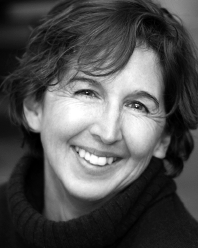 As Photonics Spectra readers know, the January issue traditionally reports on trends. This issue is no exception and includes insightful trends in free-space communications, lidar, holography, and lasers. There is also a surprise: a real-time update from Rochester, N.Y., and the South Pole on the recently deployed BICEP Array experiment. And there’s a look into the future via SCHOTT’s developments with consumer-grade smart glasses.
As Photonics Spectra readers know, the January issue traditionally reports on trends. This issue is no exception and includes insightful trends in free-space communications, lidar, holography, and lasers. There is also a surprise: a real-time update from Rochester, N.Y., and the South Pole on the recently deployed BICEP Array experiment. And there’s a look into the future via SCHOTT’s developments with consumer-grade smart glasses.
As I look ahead, I’ll be working to trend 2020 toward optimism. How? By being more attuned to the possibilities in global solutions. The marvelous writer Ray Bradbury described science fiction as the place something is imagined before it becomes real, or “the art of the possible.” He also said: “The history of science fiction started in the caves 20,000 years ago. The ideas on the walls of the cave were problems to be solved. It’s problem-solving. Primitive scientific knowledge, primitive dreams, primitive blueprinting: to solve problems.”
Of course, the desire to find solutions — large and small — powers science. But global thinking, such as circular economies, international collaborations, and new ways to knock the status quo, energizes me. Striving to participate in solutions is, I think, one way to combat our natural human tendencies to fret the details and slip into pessimism.
In the spirit of possibility, I’ve gathered examples of solutions-style thinking that found their way to me and that I would like to share with you. I hope they are useful and
inspirational.
Pint of Science — thousands of researchers across 400 cities and 24 countries who,
each May, share and discuss their findings with people in their local pub, bar, or café; Microsoft AI for Earth — supports organizations that apply AI to environmental
challenges; ACTPHAST — a unique one-stop-shop, open-access, full supply chain that
supports photonics innovation; Hello Tomorrow — unlocks the power of deep tech to solve our toughest global challenges; NineSigma — with a solution provider network, works with clients to identify and formalize technology and science needs; Fast
Forward — invests in entrepreneurs who use technology to accelerate social impact.
Additionally, National Geographic announced the middle school-age winners of its annual GeoChallenge; 3M announced the winners of its Young Scientist Challenge; Edmund Optics announced its Norman Edmund Inspiration Award winner; Luminate selected finalists for its third cohort; Ocean Insight announced the winner of its
Spectroscopy Star competition; and the ISEF (International Science and Engineering Fair) drew the participation of more than 1800 teen researchers.
In 2019, people made drones that plant trees and IR cameras that help marine vessels detect whales and reduce collisions. Someone made compostable bioplastic from fish skin and scales. Someone else made sustainable optical fiber from cellulose.
I’m looking forward to a year of renewed possibility and working toward solutions.
Warmly,
